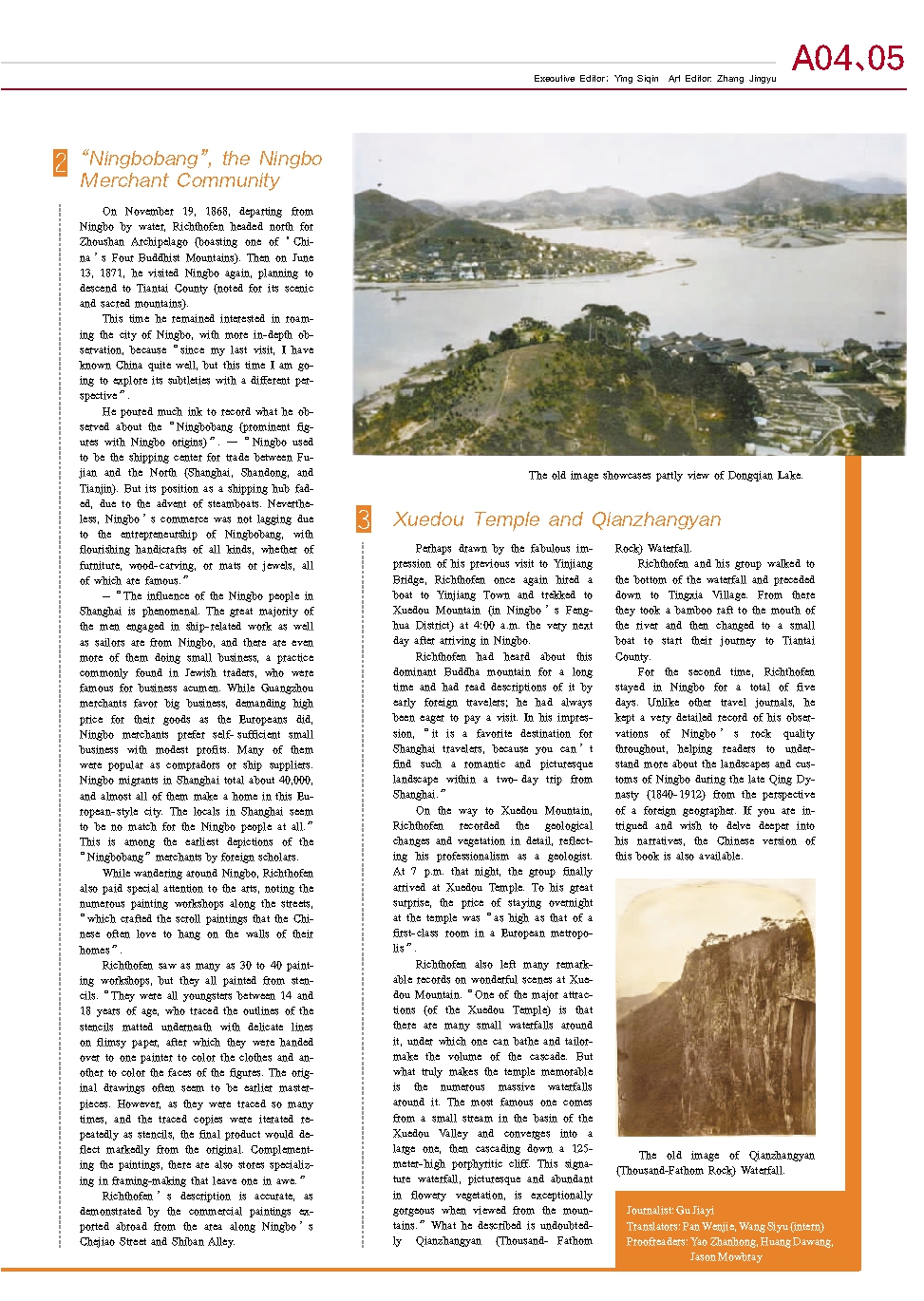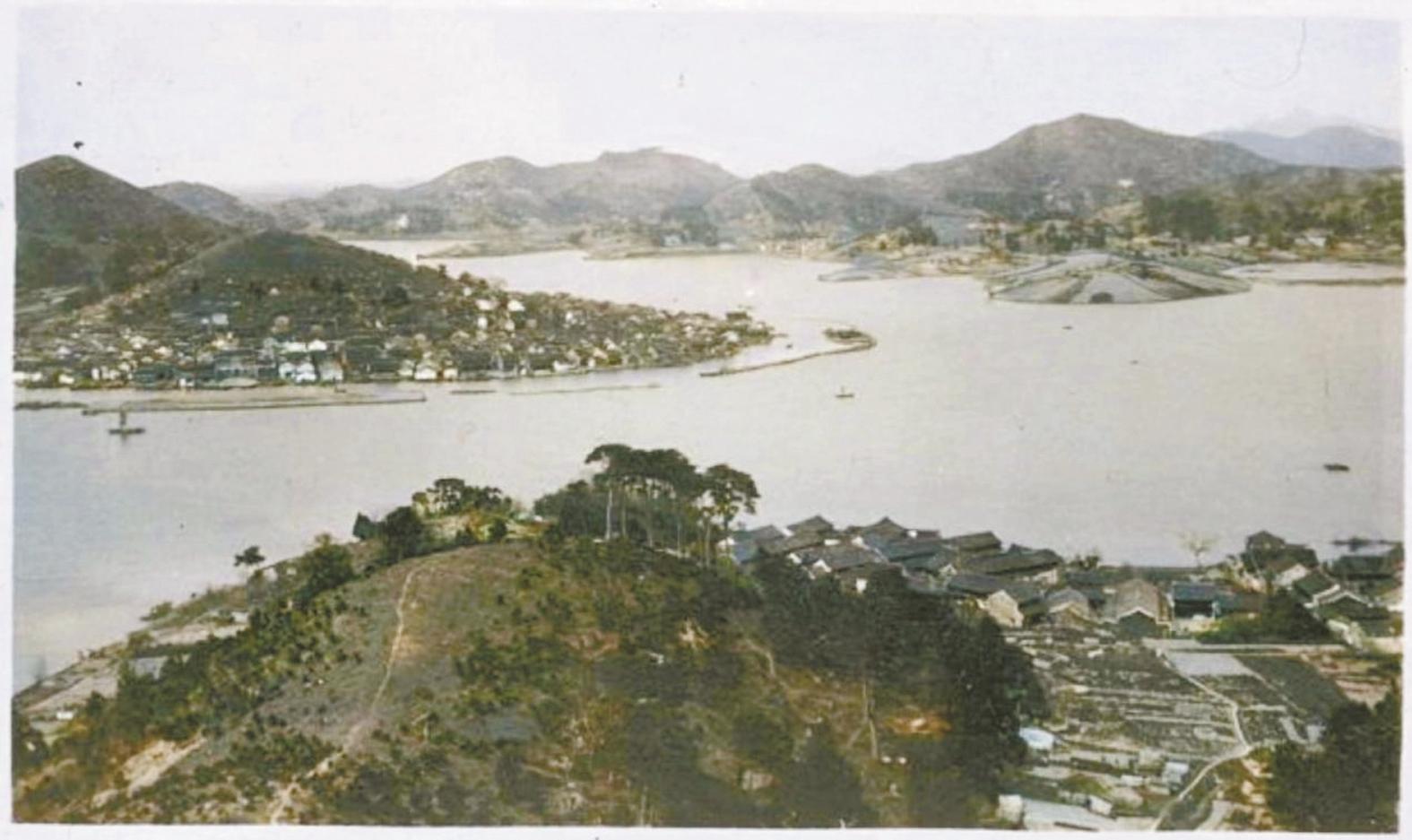On November 19, 1868, departing from Ningbo by water, Richthofen headed north for Zhoushan Archipelago (boasting one of ‘China’s Four Buddhist Mountains). Then on June 13, 1871, he visited Ningbo again, planning to descend to Tiantai County (noted for its scenic and sacred mountains).
This time he remained interested in roaming the city of Ningbo, with more in-depth observation, because “since my last visit, I have known China quite well, but this time I am going to explore its subtleties with a different perspective”.
He poured much ink to record what he observed about the “Ningbobang (prominent figures with Ningbo origins)”. ― “Ningbo used to be the shipping center for trade between Fujian and the North (Shanghai, Shandong, and Tianjin). But its position as a shipping hub faded, due to the advent of steamboats. Nevertheless, Ningbo’s commerce was not lagging due to the entrepreneurship of Ningbobang, with flourishing handicrafts of all kinds, whether of furniture, wood-carving, or mats or jewels, all of which are famous.”
-- “The influence of the Ningbo people in Shanghai is phenomenal. The great majority of the men engaged in ship-related work as well as sailors are from Ningbo, and there are even more of them doing small business, a practice commonly found in Jewish traders, who were famous for business acumen. While Guangzhou merchants favor big business, demanding high price for their goods as the Europeans did, Ningbo merchants prefer self-sufficient small business with modest profits. Many of them were popular as compradors or ship suppliers. Ningbo migrants in Shanghai total about 40,000, and almost all of them make a home in this European-style city. The locals in Shanghai seem to be no match for the Ningbo people at all.” This is among the earliest depictions of the “Ningbobang” merchants by foreign scholars.
While wandering around Ningbo, Richthofen also paid special attention to the arts, noting the numerous painting workshops along the streets, “which crafted the scroll paintings that the Chinese often love to hang on the walls of their homes”.
Richthofen saw as many as 30 to 40 painting workshops, but they all painted from stencils. “They were all youngsters between 14 and 18 years of age, who traced the outlines of the stencils matted underneath with delicate lines on flimsy paper, after which they were handed over to one painter to color the clothes and another to color the faces of the figures. The original drawings often seem to be earlier masterpieces. However, as they were traced so many times, and the traced copies were iterated repeatedly as stencils, the final product would deflect markedly from the original. Complementing the paintings, there are also stores specializing in framing-making that leave one in awe.”
Richthofen’s description is accurate, as demonstrated by the commercial paintings exported abroad from the area along Ningbo’s Chejiao Street and Shiban Alley.



